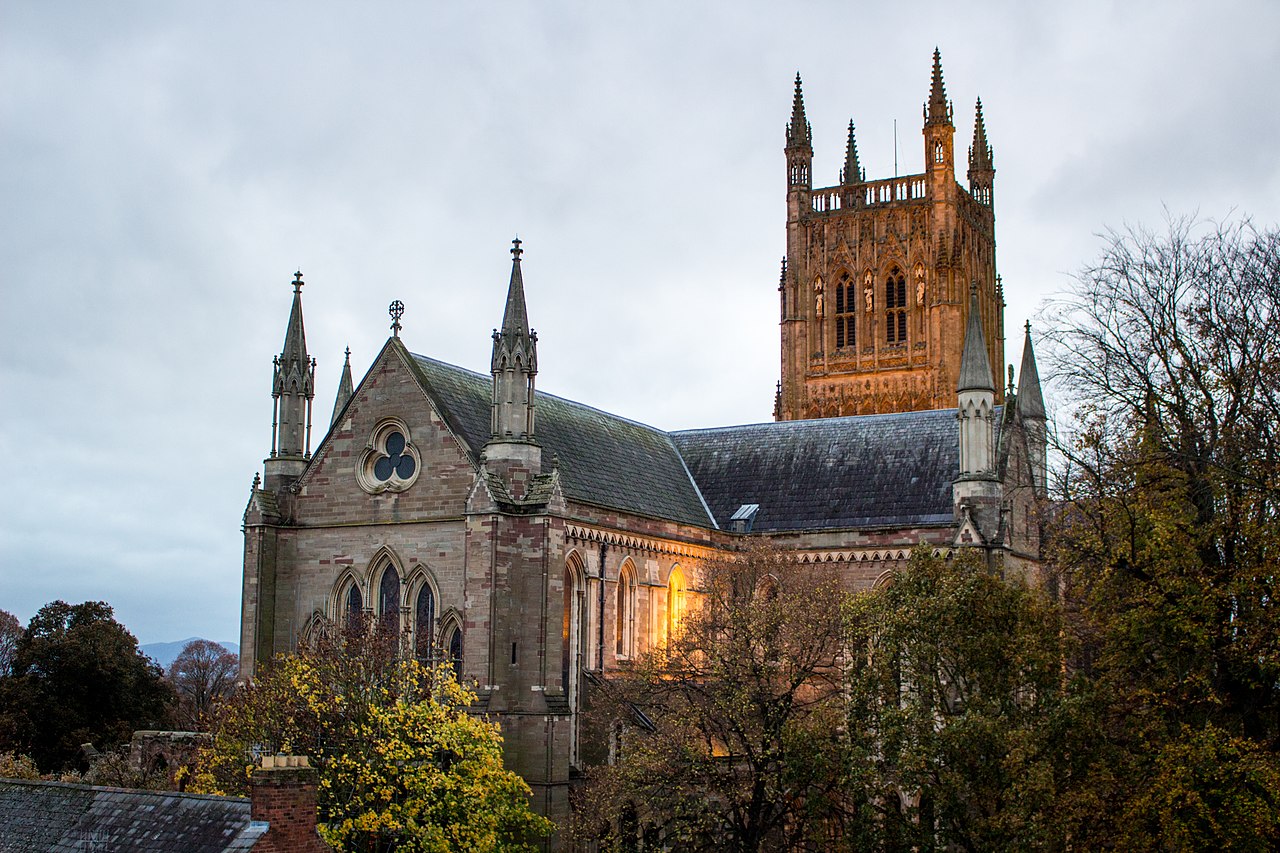Worcester Cathedral, a majestic presence dominating the city’s skyline, isn’t just a beautiful building; it’s a living testament to over a thousand years of English religious history, a site of pilgrimage, and a poignant symbol of resilience. Its story is woven with threads of royal ambition, turbulent religious upheaval, and unwavering devotion.
The Origins: A Royal Abbey (1076-1534)
The story begins in 1076, shortly after the Norman Conquest. King William II, seeking to solidify his rule and demonstrate his authority, commissioned the building of an Augustinian abbey on the site of an earlier Anglo-Saxon church. This wasn’t simply a new church; it was intended as a grand royal palace, a powerful statement of Norman dominance. The first Bishop of Worcester, William de Wyche, laid the foundation stone, and within a decade, the original Norman abbey was complete, a formidable fortress of stone.
For over 450 years, Worcester Abbey thrived. It was a center of learning, a pilgrimage destination, and a vital administrative hub. Pilgrims from across England, and indeed Europe, flocked to the shrine of Saint Wulfric, a 8th-century missionary bishop, who had been canonized after his death. The shrine, containing fragments of his remains, was a powerful draw, and the abbey’s prosperity grew alongside it. The abbey flourished under the patronage of successive kings, including Edward the Confessor, Henry II, and Richard I.
The Dissolution and a New Purpose (1534-1839)
The religious landscape of England changed dramatically in the 16th century with the rise of Henry VIII. In 1534, the abbey was dissolved by the Crown, a process driven by the King’s desire to break away from the authority of the Pope. The magnificent stone building, though stripped of its monastic life, was spared demolition. Instead, it was repurposed as a Cathedral, becoming the seat of the newly created Diocese of Worcester.
This transition wasn’t without its challenges. The Cathedral suffered damage during the English Civil War in the 17th century, most notably during the Siege of Worcester in 1643, when Parliamentary forces bombarded the structure. Following the war, extensive rebuilding was undertaken, overseen by architects like Christopher Wren, who strengthened the foundations and added significant features.
Victorian Restoration and Beyond (1839-Present)
The 19th century brought a further transformation. In 1839, a devastating fire ravaged the cathedral, destroying a significant portion of the interior. Led by architect Sir George Gilbert Scott, a meticulous and enthusiastic restoration began. Scott’s vision was to create a “neo-Gothic” masterpiece, incorporating elements of the original Norman structure with a heightened sense of romantic beauty. The result is the breathtaking cathedral we see today – a glorious blend of Romanesque and Gothic styles, brimming with stunning stained glass, intricate carvings, and impressive monuments.
Throughout the 20th and 21st centuries, Worcester Cathedral has continued to serve as a place of worship, prayer, and community. It’s a vital center for liturgical services, musical performance, and educational outreach. It’s a place of remembrance, hosting services for national events and preserving a remarkable collection of historical artifacts.
Key Features and Treasures:
- The Nave: The magnificent vaulted nave, with its soaring arches and ribbed ceiling, is a masterpiece of Gothic engineering.
- The Chapter House: Constructed in 1275, the iconic octagonal Chapter House is perhaps the cathedral’s most recognizable feature.
- The St Wulfric Shrine: Though no longer containing relics, the shrine remains a focal point of pilgrimage and reflection.
- The Royal Stone Bench: An ornate stone bench originally commissioned by King John for the use of the King and his court.
- The St Chad Monument: A towering monument commemorating the city’s patron saint.
More than just bricks and mortar, Worcester Cathedral stands as a powerful symbol of England’s enduring faith, its artistic heritage, and its capacity for resilience. A visit to the cathedral is a journey through time, a contemplation of history, and a chance to experience the profound spirituality that has shaped its story for over a thousand years.
Resources for Further Research:
- Worcester Cathedral Website: https://www.worcestercathedral.org.uk/
- English Heritage: https://www.english-heritage.org.uk/visit/places/worcester-cathedral/
Discover more from LandmarkLocation.com
Subscribe to get the latest posts sent to your email.

